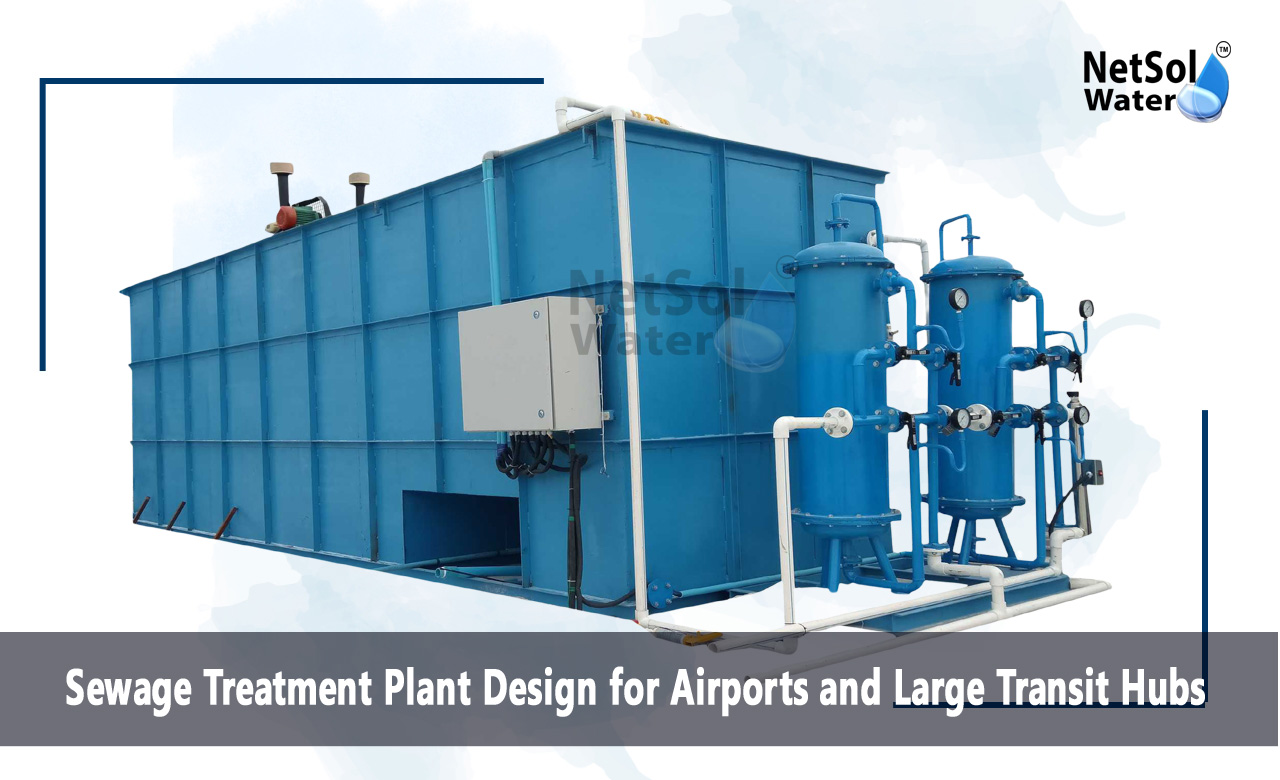STP Plant Design for Airports and Large Transit Hubs
STP Plant Design for Airports and Large Transit Hubs must meet high demand and strict rules. Airports use large volumes of water in terminals in restrooms, kitchens and in cleaning operations. Designers must plan for peaks in flow that happen when many flights arrive or when events take place. A good design reduces discharge to local sewers and cuts costs by reusing water for toilet flushing and for landscape care. These goals also protect nearby rivers and wells and they help airports meet safety and health standards. Global guidance and case studies show that treating and reusing wastewater at airports gives clear gains for operations and for the local area.
Why STP Plant Design Matters?
Design sets the limits for long term function and for safety. A weak plan can cause odour and health problems and it can force closures or heavy fines. let us have a look on some
1: Passenger and Staff Flow Estimates
Planners must estimate daily and peak wastewater flows from passengers, staff, shops and hotels. These estimates use per passenger or per employee factors and account for food services and for laundry in hotels at the airport. Accurate flow numbers guide tank volumes pump sizes and treatment steps.
2: Seasonal and Peak Variations
Airports show big fluctuations in water use by season and by day. Designers must include buffer capacity and flexible process control. A plant sized only for average flow fails during peaks. The design must handle sudden surges without harming treatment quality.
Capacity and Flow Calculation
Capacity drives the footprint and the cost. Stated capacity affects pumps, clarifiers and disinfection units. let us have a look on some
1: Base Water Use and Sewage Strength
Designers use standard flow rates per passenger and per staff member and they use expected strength numbers such as BOD values. These numbers affect the biological and physical units in the plant. Using conservative estimates keeps operation smooth under higher loads.
2: Storage and Equalization Tanks
Equalization tanks hold surges and balance the flow into the process. These tanks keep the biological units from facing wide swings in load. Proper sizing reduces stress on microbes and it keeps the treated water stable for reuse.
Treatment Technologies and Layout
Choosing the right steps shapes the plant footprint and the quality of the treated water. Each airport needs a specific mix of units and controls. let us have a look on some
1: Primary and Secondary Treatment Options
Primary screens and settling remove solids. Secondary biological units remove organics. Designers may choose systems such as activated sludge membrane bioreactors or trickling filters based on land cost and performance needs. Each option trades land use for power use and for chemical needs.
2: Advanced Treatment and Disinfection
Airports often need to remove fine particles, pathogens and chemicals from fluids and from cleaning agents. Filtration, adsorption and disinfection steps give the final polish needed for reuse. This step secures water for toilet flushing, landscape work and for cleaning tasks.
Integration with Operations and Resilience
The plant must match the airport schedule and it must keep working in emergencies. This reduces disruption and protects passengers and staff. let us have a look on some
1: Redundancy and Backup Systems
Redundant pumps and a standby power supply keep the plant running during outages. Designers set alarms and remote monitoring to catch faults early. These features keep treatment reliable and they protect terminal functions.
2: Stormwater and Deicing Management
Airport runoff can include glycol and heavy oils from aircraft aprons. The wastewater plan must separate and treat these flows or route them to specific treatment trains. Proper isolation prevents chemical loads from harming the biological process.
Compliance Monitoring and Maintenance
A plant must prove that it meets law and that it keeps safe water for reuse. Regular checks make this possible. let us have a look on some
1: Sampling and Reporting
Operators sample influent and effluent and they keep records to meet regulator needs. Clear records reduce legal risk and they show that the airport meets limits for discharge and reuse.
2: Operation Training and Spare Parts
A trained team keeps the plant reliable. Scheduled maintenance and a stock of key parts cut downtime. Good training helps operators respond to changes in passenger patterns and in waste strength.
Cost and Benefits
A clear cost plan shows when the plant pays back and how it helps the airport function. Owners must weigh capital cost against long term savings and against risk reduction. let us have a look on some
1: Savings from Reuse
Reusing treated water lowers fresh water purchases and cuts sewer fees. This saving grows when airports use treated water for toilets and for landscape irrigation. The reuse plan therefore becomes part of daily operations.
2: Long Term Value
A well built plant reduces fines and it supports expansion in passenger numbers. The plant also adds resilience in drought years and during public sewer outages.
Conclusion
A clear STP Plant Design for Airports and Large Transit Hubs improves water security and it protects the local environment. Good design starts with accurate flow studies and it builds in flexible treatment steps backup systems and a reuse plan. These measures cut costs, reduce risk and they keep passengers safe. If you want a review of your site or a simple feasibility note please get in touch for a consultation and an on-site plan that matches your needs.
Contact Netsol Water at:
Phone: +91-9650608473, Email: enquiry@netsolwater.com



